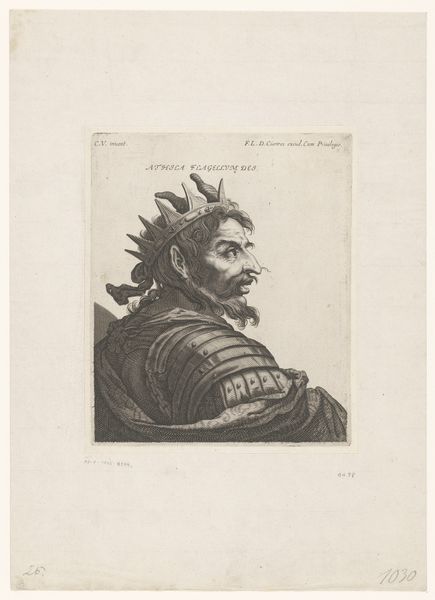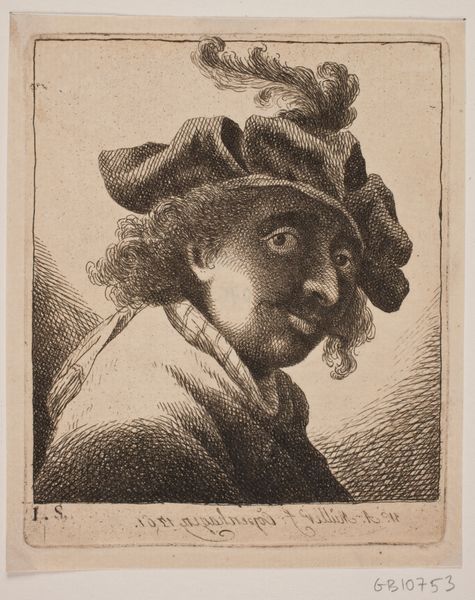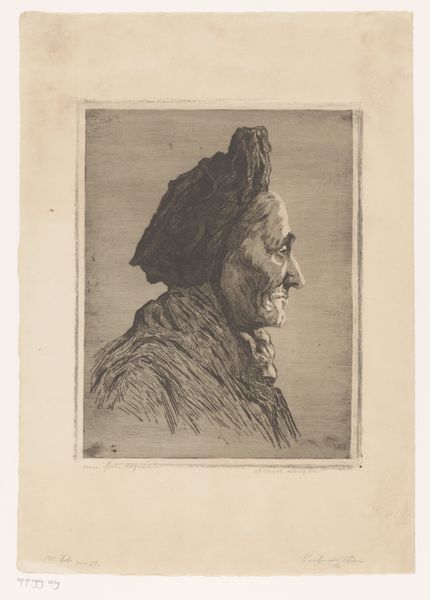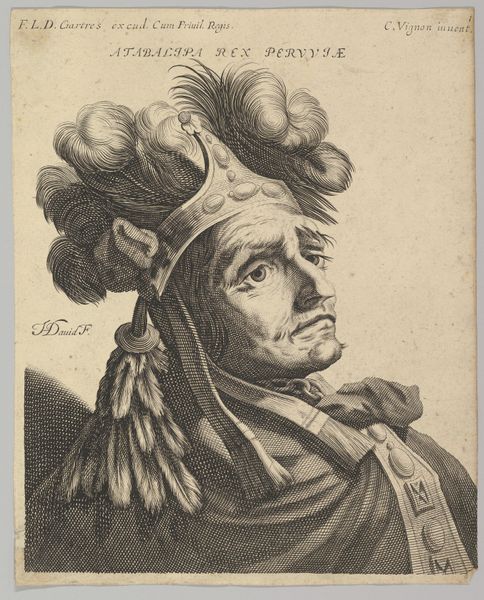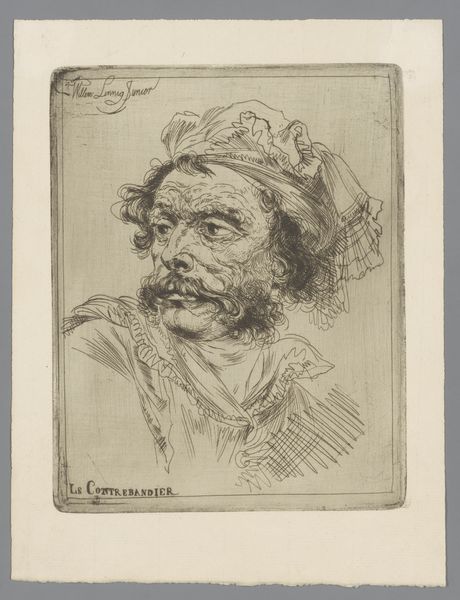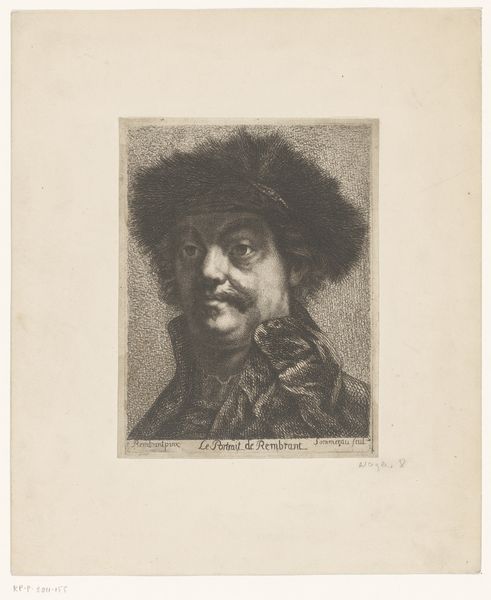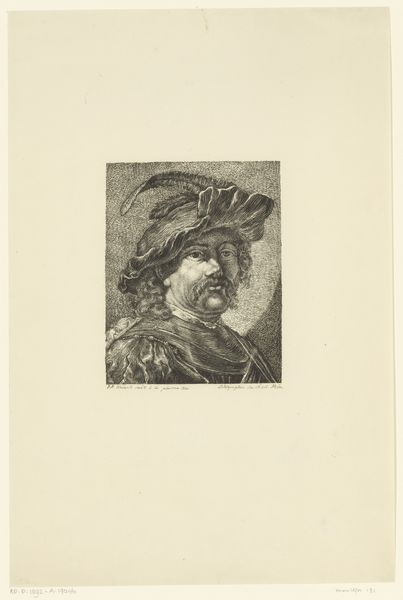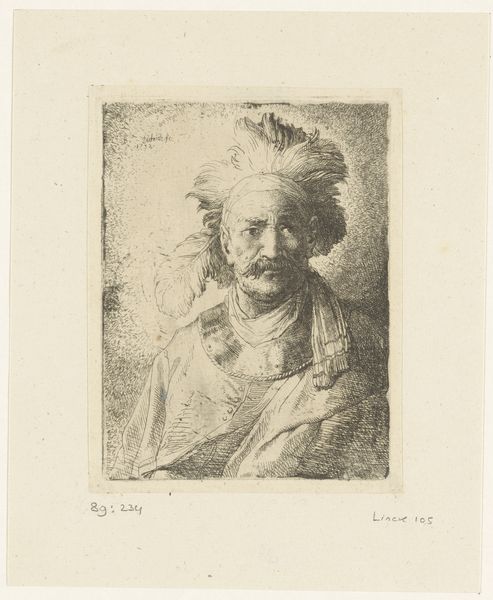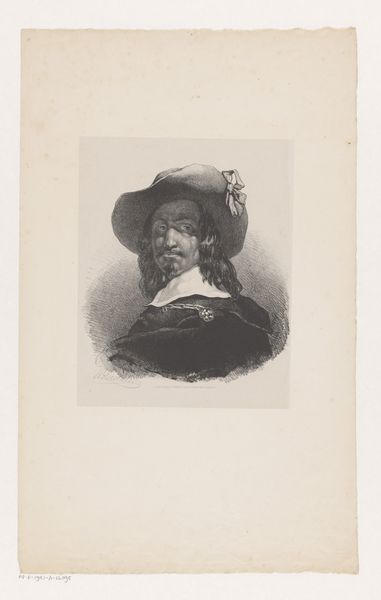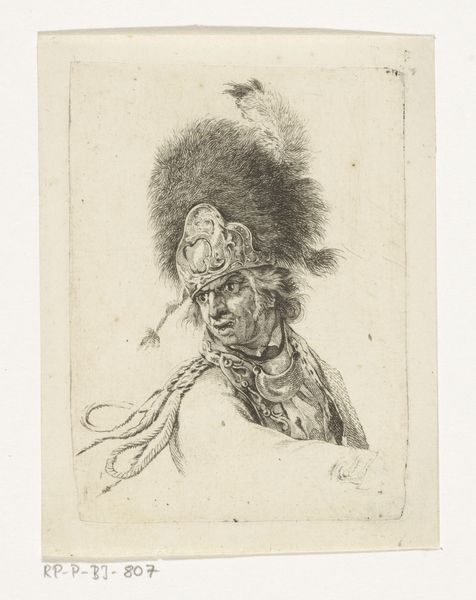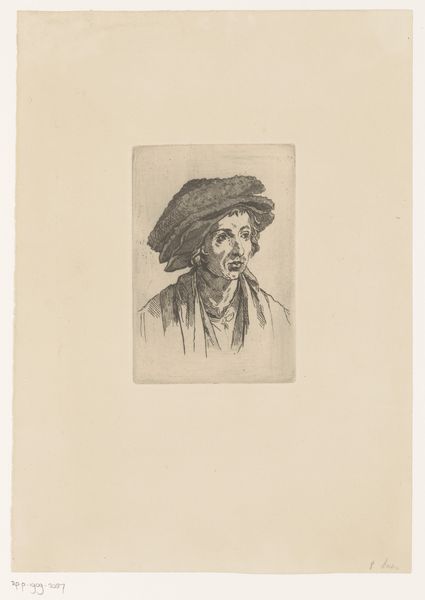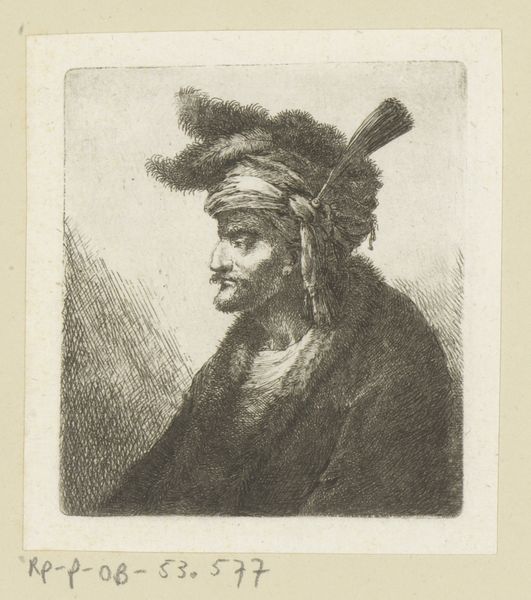
print, engraving
#
portrait
#
baroque
# print
#
figuration
#
engraving
Dimensions: height 224 mm, width 190 mm
Copyright: Rijks Museum: Open Domain
Curator: Here we have "Portret van Timoer Lenk," an engraving from between 1615 and 1647, attributed to Jerôme David. Editor: He has this sort of haunted gaze, hasn't he? It's arresting, like he knows something we don’t. Even with the rather opulent hat. Curator: Well, that hat is certainly a statement, isn’t it? What interests me is how a print, a medium ostensibly about reproduction, is used here to depict a powerful historical figure. What purpose did these early printed portraits serve? Editor: Power and propaganda, of course. Visuals have always legitimized those in power. The controlled gaze, the impressive dress…Tamerlane becomes a spectacle for a European audience. Curator: And an exotic one at that! Looking at the piece more closely, I find myself drawn to the intricacy of the engraving itself. The tiny lines that define his facial features, the way the light catches the plume…it’s a beautiful thing, really. Do you feel a tension here, between the aesthetic pleasure and its implied purpose? Editor: Definitely. On one hand, it's about celebrating the European mastery of engraving. It also highlights the violence embedded in this depiction, portraying Tamerlane within a specific power dynamic. Who has the right to represent whom, and for what reasons? Curator: It gives you pause, certainly. It’s as if the artistry invites you in, but the underlying implications…well, that’s a longer conversation, isn’t it? Still, that ambiguity makes the print endlessly engaging to consider. Editor: Absolutely. And isn't it fascinating how this historical figure is remembered across time and media? This print certainly adds a layer to his story. Curator: It really makes one ponder what gets memorialized and how these portrayals shape our understanding of history. It’s so much more than just a picture. Editor: Exactly. These visual representations reinforce colonial ways of thinking, and how the narratives of others are shaped.
Comments
No comments
Be the first to comment and join the conversation on the ultimate creative platform.
